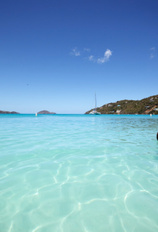A few of you might actually prefer red-eye schedules on long intercontinental flights—they avoid the cost of a hotel night and maximize your available time at your destination. And you may tolerate them as the inevitable penalty you have to pay for a trip to Europe, Asia, the South Pacific, or South America. If you’re in business class, red-eyes are really not bad: These days, most competitive business-class seats allow you to lie straight, if at a bit of an angle in some. And red-eyes aren’t totally intolerable in true premium economy, where you have a reasonable amount of room and a decent recline. But in economy class, they’re terrible: My view is that economy-class red-eyes violate the Constitution’s ban on cruel and unusual punishment. And even if you aren’t that vehement, you know that spending a night in a too-tight economy seat can be an exhausting ordeal. Fortunately, even on long intercontinental routes where red-eyes predominate, a few airlines run a few daytime flights.
Europe: For trips to the most popular intercontinental destinations, you know the almost-universal pattern: Overnight eastbound from the United States and Canada to Europe, daytime back. That pattern is dictated by time zones and travel times:
- The typical eastbound flight times to Western Europe are seven to 11 hours, with a time change of five to nine hours, for total “clock” times of 12 hours from the East Coast and up to 20 hours from the West Coast.
- The typical westbound flight times are eight to 12 hours, but the clock times are just three to four hours.
Those circumstances allow one airplane to fly a daily round-trip schedule on many routes: overnight eastbound, daytime return, keeping the airplane flying 14 or more hours out of 24—a very desirable high “utilization” rate for an airline. By contrast, a plane flying to Europe during the day arrives very late in the evening, local time—too late to go anywhere else until the next morning—resulting in a much less attractive utilization figure. Nevertheless, you find a few daylight eastbound nonstops, almost all to London:
- Boston to London on British Airways with American Airlines codeshare.
- Chicago to London on American Airlines with British Airways codeshare.
- New York/JFK to London on British Airways with American codeshare and Virgin Atlantic with Delta codeshare.
- Newark to London on United and Virgin Atlantic with Delta codeshare.
- Toronto to London on Air Canada.
- Washington to London on United.
- Boston and New York/JFK to Reykjavik on Icelandair, seasonal and less than daily.
Some London flights arrive early enough for a late connection to Paris; some depart late enough for domestic connections to the North American gateway. And the Reykjavik flights are great if you want to stop over (no extra charge) in Iceland.
Asia: Lots of westbound flights from the United States and Canadian West Coast gateways to China, Hong Kong, Japan, Korea, and Taiwan are daylight trips, but all return flights are red-eyes.
South Pacific: I found no daylight nonstops in either direction between the United States or Canada and Australia or New Zealand. You can, however, fly to Honolulu on Hawaiian with a no-charge stopover and then fly daylight to Auckland, Brisbane, or Sydney, but with a red-eye return.
Southern South America: Although most flights are red-eyes both ways, you can fly daylight nonstops in both directions from Miami to Buenos Aires on Aerolineas, Miami to Sao Paulo on American and TAM, and New York to Sao Paulo on TAM. You find more daylight options to Northern South America
Domestic: Red-eyes dominate a few long-haul east-west domestic U.S. routes. From Anchorage, the only daytime nonstops to the lower 48 are on Alaska Airlines to Portland and Seattle all year and seasonally to Los Angeles and San Francisco. From Honolulu, all nonstops to destinations east of Las Vegas are red-eyes. Although other lines fly eastbound transcontinental daylight trips, if you like extra legroom and a no-charge checked bag, JetBlue runs daylight nonstops from Los Angeles, San Francisco, and Seattle to Boston or New York, but all eastbound nonstops from Portland and Sacramento are red-eyes.
Ed Perkins on Travel is copyright (c) 2014 Tribune Media Services, Inc.
You Might Also Like:
We hand-pick everything we recommend and select items through testing and reviews. Some products are sent to us free of charge with no incentive to offer a favorable review. We offer our unbiased opinions and do not accept compensation to review products. All items are in stock and prices are accurate at the time of publication. If you buy something through our links, we may earn a commission.
Related
Top Fares From
Today's Top Travel Deals
Brought to you by ShermansTravel
Kenya: 14-Night Tour, Incl. Tanzania &...
smarTours
 vacation
$7125+
vacation
$7125+
7-Night Caribbean Round-Trip Cruise From Orlando:...
Norwegian Cruise Line
 cruise
$739+
cruise
$739+
Ohio: Daily Car Rentals from Cincinnati
85OFF.com
 Car Rental
$19+
Car Rental
$19+




